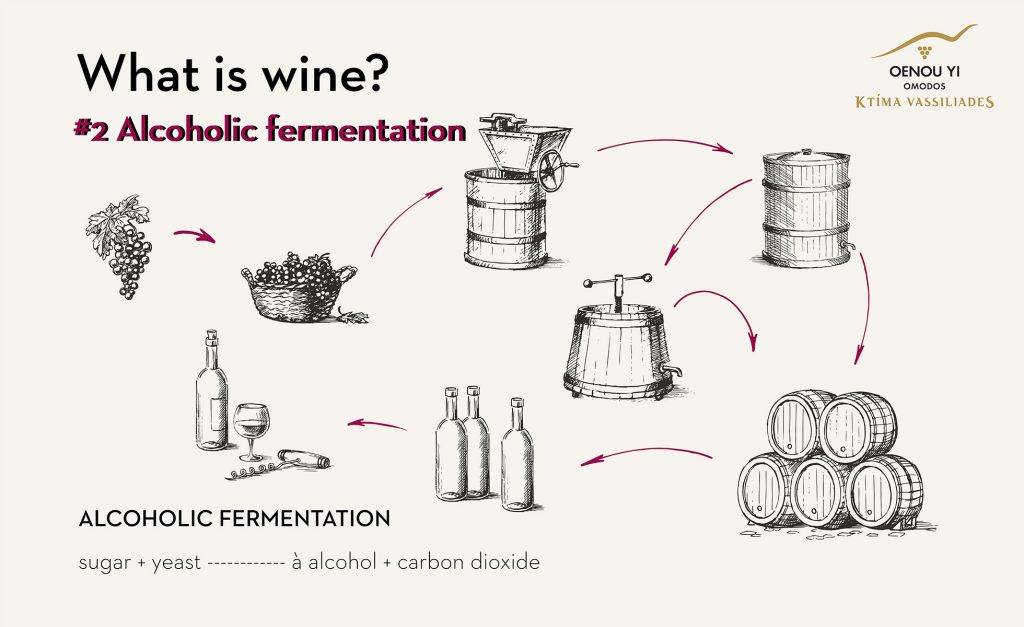As we’ve learnt in the previous article What is wine? | #1 Grape’s anatomy, wine is grape juice and its colour, flavours and aromas are first and foremost affected by the fruit itself. However, grape juice itself isn’t enough to cause alcoholic fermentation and, therefore, wine. Here’s where yeast enter the scene.
What are yeasts?
Yeast are tiny organisms feeding on sugar and transforming it into alcohol and carbon dioxide. Many times, this process is ongoing until the yeast consume all the sugar. When, however, grapes contain a high amount of sugar, the yeast stop before consuming all of it. This occurs in sweet wines. Another case in which yeast are affected is that of ‘fortified’ wines. In this occasion extra alcohol produced by distillation is added and the yeast die before consuming all the sugar.
This is how yeast that consume sugar realise alcoholic fermentation, which causes the formation of alcohol and carbon dioxide.
The alcohol level in a wine is measured as ‘alcohol by volume’ which is indicated with the abbreviation ‘abv’. Thus, 10% abv means that 10% of the liquid is alcohol.




